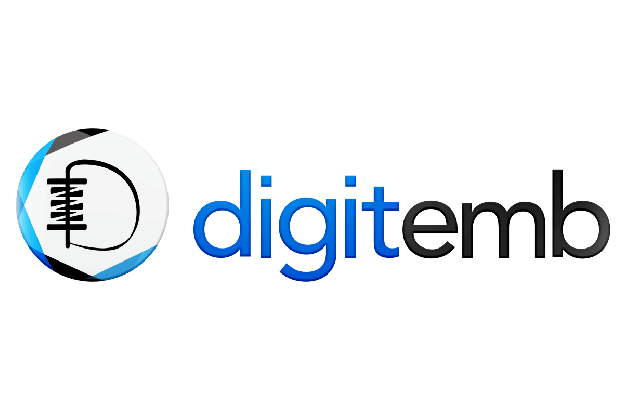Embroidery has always been a timeless blend of artistry and craftsmanship. Among its many modern forms, appliqué embroidery stands out for its layered textures, vibrant colors, and versatility. It merges traditional sewing aesthetics with modern machine precision, producing designs that are visually rich and tactile. However, before these intricate creations can come to life, they must begin with a technical process called Applique Embroidery Digitizing — the digital bridge between concept and craft.
This process converts digital artwork into an embroidery machine file, mapping out each stitch, fabric placement, and border. It’s what ensures every patch of fabric fits perfectly, every edge remains clean, and every color transition is flawless. In professional embroidery, quality digitizing defines the difference between a design that merely looks good and one that truly stands out.
Understanding the Essence of Applique Embroidery Digitizing
Applique Embroidery Digitizing is a specialized method that prepares artwork for machine embroidery using both thread and fabric. Unlike traditional embroidery, where the entire design is built with stitches, appliqué uses fabric patches to fill larger areas. These fabrics are stitched down and outlined with embroidery, creating a multi-dimensional effect that is visually striking yet lightweight.
The digitizing process involves defining placement stitches (which show where each appliqué piece will go), tack-down stitches (which secure the fabric), and finishing stitches (which seal the edges). Each stage is digitally programmed to achieve balance, alignment, and stability. When done correctly, appliqué designs stitch efficiently, remain flat, and retain their detail even after repeated wear and washing.
The Connection Between Artistry and Technology
Appliqué embroidery sits at the intersection of creativity and engineering. While the finished result appears as artistic expression, it’s the underlying digital mapping that brings it to life. Every curve, corner, and border must be calculated to accommodate fabric behavior and machine mechanics.
Professional Applique Embroidery Digitizing combines artistic intuition with technical expertise. The digitizer interprets how different fabrics will respond under the needle, sets appropriate stitch densities, and determines thread directions that enhance visual flow. The result is a harmonious collaboration between software precision and artistic sensibility — a hallmark of high-quality embroidery production.
The Step-by-Step Process of Applique Digitizing
The digitizing journey begins with the artwork. The digitizer evaluates the design and identifies which portions should be stitched and which can be replaced with fabric patches. This decision depends on the scale, color, and complexity of the artwork.
The artwork is then converted into vector format to achieve clean, scalable outlines. Using specialized digitizing software, the digitizer creates a sequence of placement, tack-down, and border stitches. These define the flow of the embroidery machine’s operation.
After this, underlay stitches are added beneath the visible stitches to stabilize the design and prevent distortion. Stitch direction and density are adjusted based on the type of appliqué fabric — twill, felt, or satin — and the base material. Once programming is complete, the design is tested through a sample run to confirm alignment and clarity.
This level of digital precision ensures that when the design is embroidered, each fabric layer aligns perfectly, producing professional, repeatable results.
Why Fabric Selection Matters
Appliqué embroidery is defined by its textures — and those textures come from fabric choices. Selecting compatible materials is crucial to both aesthetics and functionality. The base fabric (the garment) and the appliqué fabric (the decorative layer) must work together without pulling or fraying.
Heavy fabrics like denim or canvas can handle dense satin edges, while softer materials such as cotton or fleece require lighter density and flexible underlay. The appliqué fabric must also be durable enough to withstand cutting and trimming during production. Felt, twill, and satin are popular because of their structure and clean finish.
Expert digitizers consider these details when programming stitches, applying pull compensation and density settings to ensure that every piece of fabric stays secure and visually appealing.
Creative Potential of Applique Embroidery
Appliqué embroidery offers endless creative possibilities. Designers can mix textures, patterns, and fabrics to achieve designs that pop with dimension. The layering technique allows for bold color contrast and large designs without the stiffness of heavy thread fills.
In the fashion industry, appliqué is used to create statement pieces on jackets, jeans, and sweatshirts. In corporate branding, it adds a premium touch to uniforms and promotional apparel. In sportswear, appliqué is ideal for large team logos and numbers, offering durability with a professional look.
Through precise Applique Embroidery Digitizing, each of these creative ideas can be executed flawlessly. The process ensures that the final embroidery reflects the intended design with crisp edges and vibrant detailing.
Technical Precision and Quality Control
While appliqué embroidery seems simple on the surface, maintaining consistency requires deep technical knowledge. Stitch sequencing must be optimized to prevent thread breaks and unnecessary machine stops. Stitch density, underlay, and direction are fine-tuned for each material to avoid puckering or distortion.
Another key factor is compensation — adjusting stitch width to account for fabric pull. Without it, shapes can shrink or edges may misalign. Professional digitizers also apply proper trimming sequences to minimize excess fabric and ensure a smooth transition between sections.
This meticulous attention to technical detail guarantees that every embroidered piece looks polished, whether it’s a single custom design or a mass-produced batch.
Benefits of Professional Applique Digitizing
Professional appliqué digitizing offers multiple advantages beyond visual quality. First, it improves production efficiency. Well-digitized files stitch smoothly, reducing machine downtime and material waste. Second, it ensures repeatability — the same design can be stitched consistently across different garments and fabric types.
Another major benefit is durability. The right combination of underlay and border stitches ensures that appliqué pieces stay intact even after frequent laundering. Professionally digitized appliqué designs also use fewer stitches compared to fully filled embroidery, making them lighter and more comfortable to wear.
For businesses, the result is reduced production costs and a more refined product that reflects brand professionalism.
Common Challenges and Their Solutions
Appliqué embroidery can face challenges such as fabric misalignment, edge fraying, or uneven stitching. These issues often arise from improper sequencing or inadequate stitch density. Skilled digitizers anticipate these problems by fine-tuning tack-down sequences, adjusting tension, and using proper overlap margins.
Another challenge is scaling. A design digitized for a large jacket may not translate well to a smaller shirt without adjustments. Professional Applique Embroidery Digitizing services ensure that each size variation maintains proportion, clarity, and balance.
Applications Across Industries
Appliqué embroidery is found in nearly every sector of apparel design and branding. Sports teams use it for vibrant lettering and durable logos. Fashion houses employ it for high-end embellishments that blend craftsmanship with style. Corporate uniforms gain a sophisticated, professional edge through appliqué logo embroidery.
Even in décor, appliqué is used on quilts, cushions, and banners to create a handmade yet modern aesthetic. No matter the application, precise digitizing ensures consistent quality and aesthetic appeal.
Conclusion
Applique Embroidery Digitizing is where imagination becomes reality. It’s the invisible backbone that transforms flat artwork into layered, dynamic embroidery. The process demands a deep understanding of fabrics, stitching mechanics, and design composition — all working together to produce exceptional results.
From bold fashion statements to polished corporate branding, appliqué embroidery continues to define quality and creativity in the textile industry. And behind every successful appliqué lies precise, professional digitizing — the art of perfection stitched into every layer.
- Custom Embroidery Digitizing and Vector Conversion Services
- Digitemb offers embroidery digitizing and vector conversion services along with print-on-demand, digital designs, and embroidery supplies.
- Image Embroidery Digitizing, Applique Embroidery Digitizing , Jacket Embroidery Digitizing
Related posts:
No related posts.





